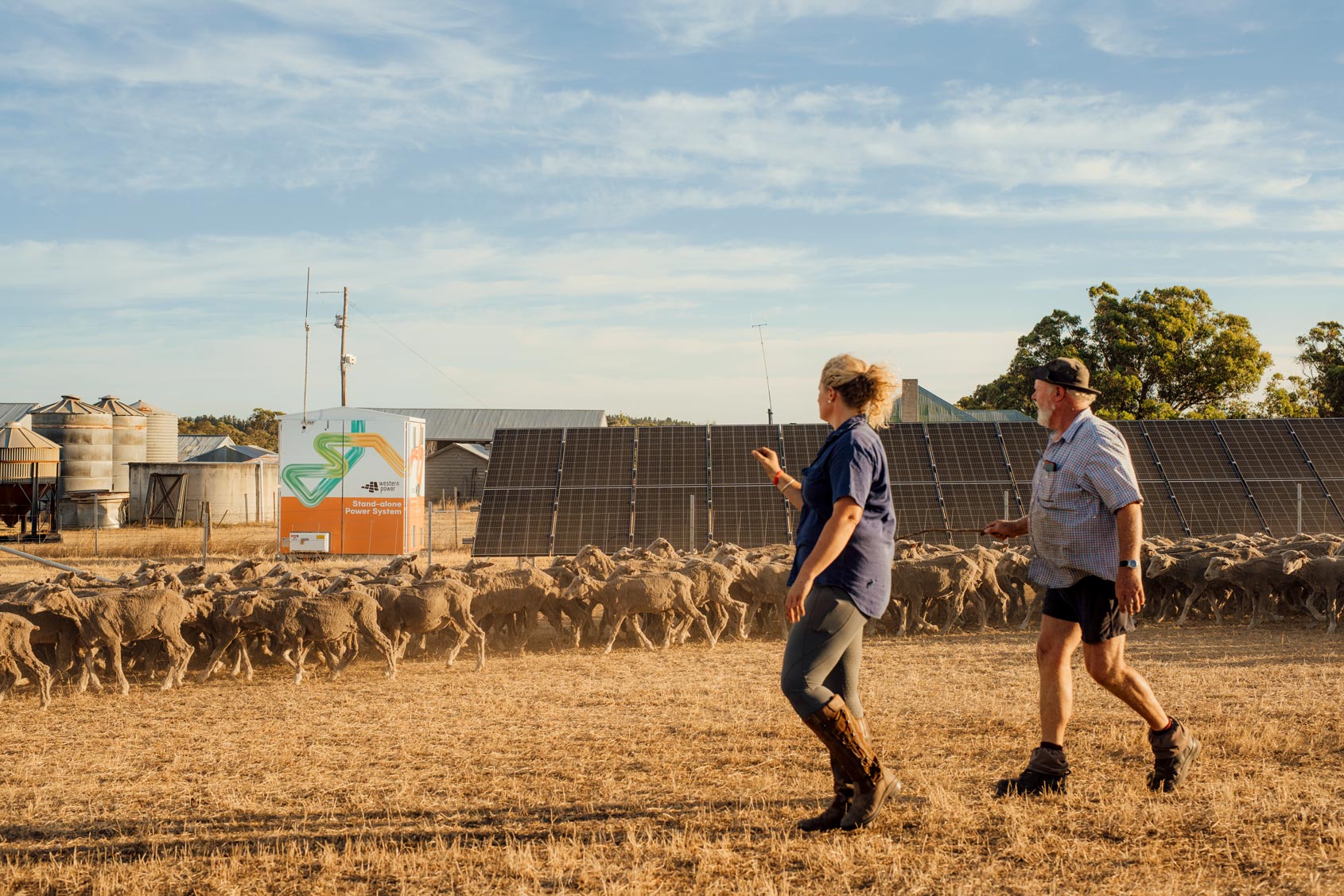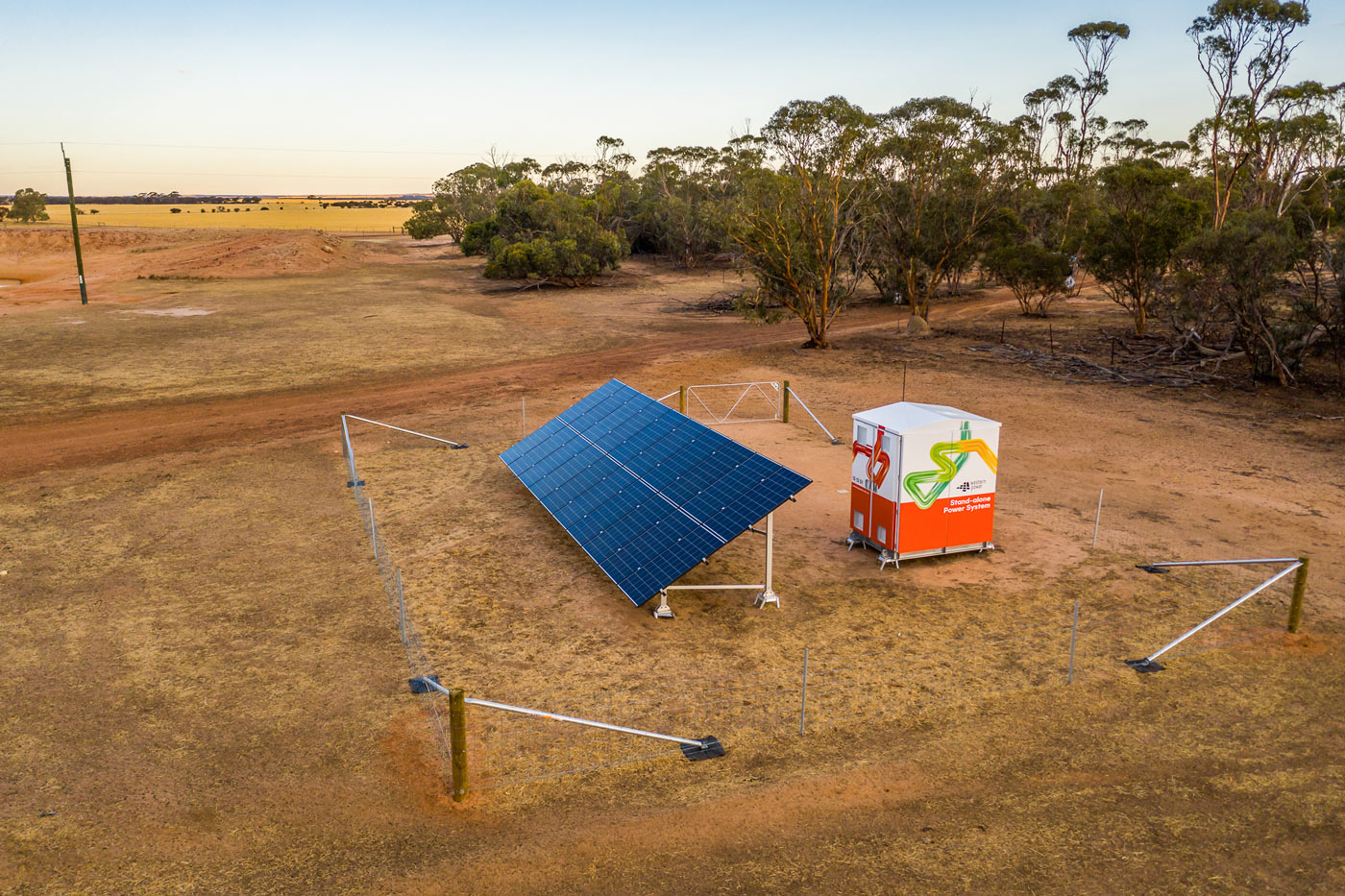When six farms took part in a trial of new stand-alone power technology, it started an exciting new journey for grid transformation that is reverberating from the country through to the city.
When six stand-alone power systems (SPS) were installed on properties in the Great Southern back in 2016, they lay the foundation for large scale deployment of renewable energy solutions for WA.
The SPS units were designed with solar power and battery storage set up, backed by a diesel generator.
The trial aimed to see how well the self-contained energy units would perform as an isolated and renewable energy source. The big questions were whether the renewable energy generated match the properties’ energy needs, and if SPS could improve power reliability for properties at the end of long power lines and subject to regular outages.
The results were outstanding.

SPS provided better quality, more renewable and more reliable power. The solar and batteries covered around 90% of the energy needs, even in power-hungry applications like shearing and welding sheds. And all without poles and wires, which reduced bushfire risk.
The SPS program is being quickly scaled up. More than 4000 units will be deployed across regional WA in the coming years.
And the benefits are reaching even further, from the country to the city.
Using SPS smarts to help metro customers
Seeing how well that energy technology could work on an isolated property opened new possibilities around the use of new energy technology in more populated areas.
Western Power continually looks to improve and future-proof the network. The strategy to transform to a modular grid was born, incorporating more localised renewable energy generation to suit local conditions and better service customers.
Solar panels were already familiar on rooftops, but SPS was the first time we had trialled using solar energy as a closed circuit with a battery for customers - in essence, a mini-microgrid for a localised setting.
The performance of SPS provided valuable insights into the effectiveness of solar and battery technology, and how islanded solutions could fit within the larger SWIS grid operations.
These learnings supported the rollout of more renewable technology across the grid, including:
- Community batteries across Perth and regional WA which store excess solar power for use in peak load periods
- Virtual Power Plant (VPP) trial, Project Symphony where power operates in both a grid-connected and islanded way, offering local and renewable power solutions to the local community
- Peer-to-peer energy sharing trials enabling customers to store solar in a battery and sell or share any excess they don’t need
- Microgrids in Kalbarri and Perenjori which draw on local renewable energy sources and operate in grid-connected or islanded mode to keep power flowing continuously.

SPS cost savings for better infrastructure
Critically, the SPS program is helping to fund these changes, and more, in metro areas. By reducing the need to maintain poles and wires infrastructure in remote and isolated areas, we can save on cost and reinvest these savings back into new technologies to future proof the grid for all.
In creating the flexible and renewable modular grid of the future, we’re continuing to deploy more new technology, like community batteries and electric vehicle (EV) infrastructure. Plus, we’re strengthening and upgrading the grid, particularly in metro areas, so we can continue to connect greater renewables to the network.
These significant infrastructure and technology upgrades and improvements will be funded by savings that SPS provides.
